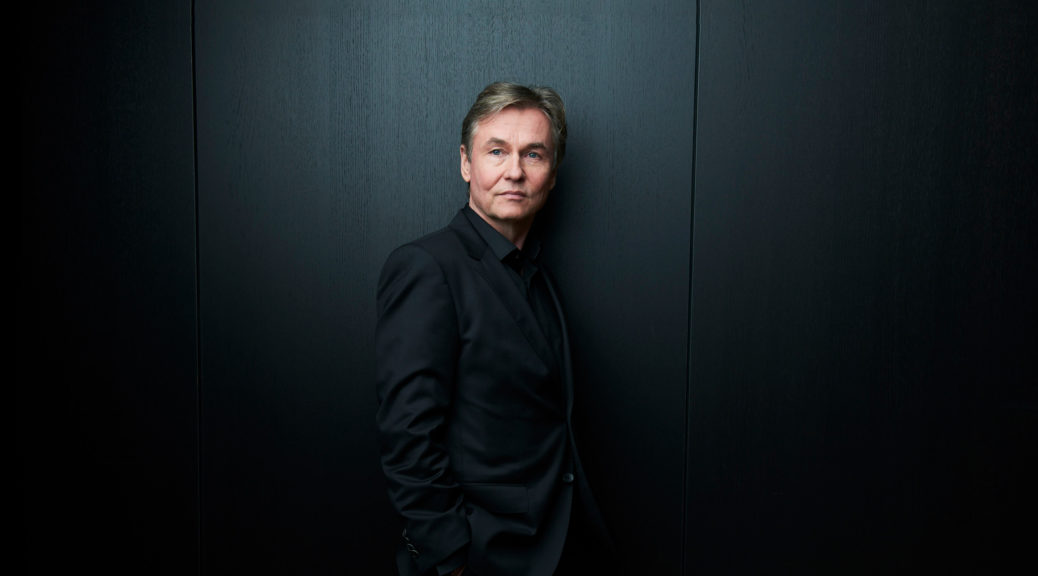
Orchestra Coming to Grips with the Past
At its best, a symphony concert is transformative, sharpening senses, raising one’s spirits, stimulating the mind and body. That was the reaction here on attending the San Francisco Symphony’s latest live-and-vibrant venture despite some repertory I’m rarely wild about.
The brass section, dormant for some 15 months of pandemic, was resplendent in playing Giovanni Gabrieli’s brass chorales as adapted from his four-century-old “Sacrae Symphoniae.” Playing antiphonally from the Davies Hall terrace seats, the octet simulated the origins in San Marco Cathedral in Venice, where the architecture demanded that the performers (usually singers) be separated on right and left balconies along the main aisle, thereby launching a whole new current of musical creativity. The tuning was spot on and the ensemble, despite the broad separation, closely coordinated to the baton of Esa-Pekka Salonen on a ground-floor “midfield” podium. The sound was effusive and hall-filling.
Moving away from 16th-century modality, the choirs introduced new harmonies in major-mode tonality that greatly resemble so much music still created today, a rock-solid sonic foundation never fully eroded by intervening centuries. How electric the impact must have been back then for the Venetian worshippers/music lovers! The three segments offered alternating brass teams: trumpets with trombones, then later horns with tubas, all via arrangements by Timothy Higgins. Clearly, during the 15-month shutdown of all winds, a lot of practice continued without pause.
At another extreme, the S.F. Symphony string players emerged for the octogenarian Richard Strauss’ eloquent lament over wanton destruction of civilian targets, art and monuments in World War Two, the 28-minute “Metamorphoses.” The work, with 23 separate parts for strings, is profoundly moving, though in a heavy-hearted way, with the minor mode dominant but not exclusively. It resonates like string-quartet composition expanded to the n-th degree with the extra voices, all harmonizing on multiple levels and octaves, all the way down to the three contrabasses, equipped with add-on extensions near the scroll enabling playing a full octave below the cellos. A falling opening theme symbolizes the despondent spirit of the time. Quoting a snatch of the “Eroica’s” slow funereal movement, Strauss firmly established the historical context.
This marked a welcome return to the prolific German romantic composer rarely spotlighted in recent SFS decades, perhaps because of uneasiness over his wartime associations. But Strauss’ compositional importance in both tone poems and opera (“Salome!” “Elektra!” “Rosenkavalier!”) is unassailable.
A distracting array of video cameras on mobile towers and tracks were bobbing about behind the ensemble, used for a project to appear in due course on its web site SFSymphony+.
The concert ended 90 intermission-less minutes after the start with Schumann’s “Rhenish” Symphony (No. 3), an exuberant and very Germanic outpouring, full of tricky hemiolas that Music Director Salonen and his players managed deftly. There are programmatic references both to the Rhine River and to the Gothic Cathedral in Cologne, difficult to spot in the sounds themselves. The audience, which has grown at Davies week by week, was wildly exuberant, reflecting both the long-awaited restart of symphonic doings as well as joy over Salonen, who plays it full out, holding nothing back, not even the vivacious timpani.
The programming suggested that Salonen was as much of a Schumann-symphony fan as predecessor MTT. It gave the brass section a large role, much deserved after the lengthened silence during pandemic days.
MUSIC NOTES—Among the surprise delights of the Gabrieli June 24 were the arresting shadows cast on the far walls by the spotlighted players and their brass–visual art alongside audible art….Placed back in moth balls were the white-tie outfits of the male musicians, now appearing in black without any ties at all. A summer-season shift? Or a new move toward California informality?
San Francisco Symphony in concert June 24-25 under Music Director Esa-Pekka Salonen, Davies Hall, S.F. For SFS info: (415) 864-6000, or go online: www.sfsymphony.org.